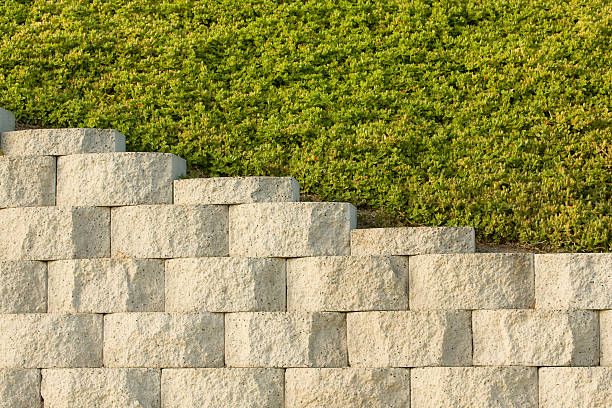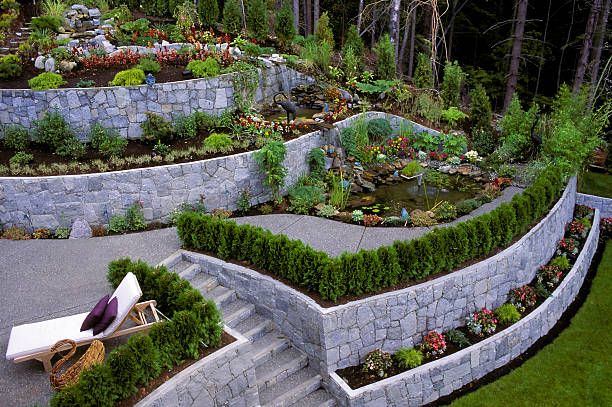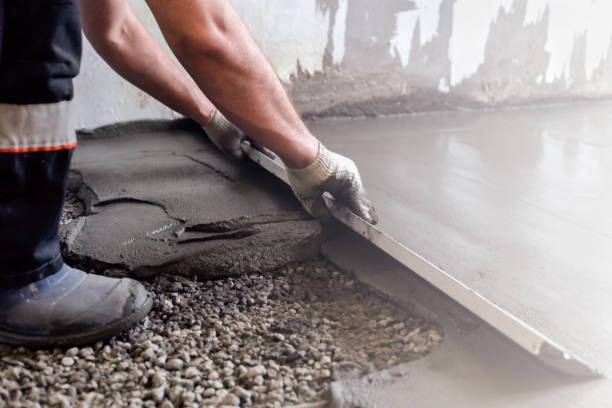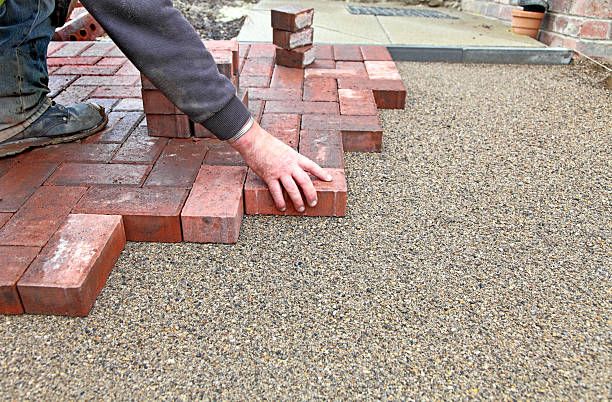How to Build a Concrete Retaining Wall: The Ultimate Guide
If you're looking for a sturdy, long-lasting solution to your retaining wall needs, then look no further than concrete retaining walls. Concrete is one of the most durable materials out there, and when used for a retaining wall, it can hold up against even the harshest conditions. In this guide, we will walk you through everything you need to know about building a concrete retaining wall. We'll discuss the different types of concrete available, as well as the various construction methods. So, whether you're looking to build a small wall or a large one, this guide has you covered!
What is a retaining wall and what are its benefits?

A retaining wall is a structure that is built to hold back earth or water. It is typically used in areas where there is a lot of rainfall or flooding, or on properties that are located on a slope. Retaining poured concrete walls can be made from a variety of materials, including concrete, block, natural stone, and wood. They can also be built using different methods, such as gravity walls, cantilevered walls, and anchored walls. Each type of wall has its own advantages and disadvantages, so it is important to choose the right one for your project. Retaining concrete wall can offer a number of benefits, including improved drainage, decreased erosion, and increased stability. They can also be used to create usable space on a sloped property, or to create visual interest in a landscape design. When selecting a retaining poured wall for your home or business, it is important to consult with a professional to ensure that it is the right solution for your needs.
Importance of retaining walls
One of the best ways to prevent soil erosion is to build a retaining wall. Retaining walls are designed to hold back soil, rocks, or water. They can be made out of a variety of materials, including wood, stone, and concrete. In many cases, retaining walls are used in conjunction with other erosion-control measures, such as terracing and planting vegetation. When designed and built properly, retaining walls can be an extremely effective way to control soil erosion. In addition to preventing erosion, retaining walls can also add aesthetic value to a property. They can create beautiful landscaping features or define different areas of a yard. Whether you’re looking to improve the appearance of your property or protect it from damage, retaining walls are worth considering.
Types of retaining walls and when each should be used
Retaining walls are walls that are built to hold soil or other materials in place. They are often used in landscaping to create flat spaces on slopes or to create raised beds for planting. There are several types of retaining walls, and the best choice for a particular project will depend on a variety of factors. Gravity wall or concrete retaining wall blocks, for example, are made from heavyweight materials like concrete or stone, and they rely on their own weight to stay in place. Cantilevered walls, on the other hand, are anchored to a solid foundation, and they use horizontal forces to resist the pressure of the soil. Sheet pile walls are another option, and they are usually used in situations where excavating is not an option. In general, gravity walls are best for smaller projects, while cantilevered walls and sheet pile walls are better suited for larger projects.

How to build a concrete retaining wall, step by step
Have a sloping lawn that's giving you trouble? Poured concrete retaining walls are a great way to level it out, and it can also be used to create raised beds for flower gardens or other types of plants. But before you get started, there are a few things you need to know. Here's a step-by-step guide to building a poured concrete retaining wall:
- The first step is to excavate the area where the wall will be built. This should be done carefully in order to avoid damaging any underground utilities.
- Once the excavation is complete, you'll need to install some formwork. This will help to shape the concrete as it's being poured.
- Next, you'll need to reinforce the formwork with steel rebar. This will help to ensure that the retaining wall is strong enough to withstand the weight of the soil behind it.
- Once the formwork and rebar are in place, you're ready to pour the concrete. Be sure to use a waterproofing agent in order to prevent water from seeping through the wall and causing damage.
- Finally, once the concrete block wall has cured, you can remove the formwork and enjoy your new retaining wall!
Tips for maintaining your retaining wall over time
A cinder block retaining wall is a great way to add both function and curb appeal to your property. In addition to providing support for slopes and embankments, concrete block retaining wall can also be used to create lovely gardens and outdoor living spaces. However, because they are built to last, concrete blocks require some maintenance to keep them looking their best. Here are a few tips for maintaining your block retaining walls over time:
- Inspect your wall regularly for signs of damage or wear. This is especially important after heavy rains or storms.
- If you notice any cracks or chips in the mortar or bricks, repair them as soon as possible.
- Keep the area around your retaining wall clean and free of debris. This will help prevent water from pooling around the base of the wall.
By following these simple tips, you can ensure that your retaining poured walls will continue to look great and avoid wall failure for years to come.
Building concrete mix freestanding walls are a great way to improve the look of your property and increase its value. With this step-by-step guide, you'll be able to do it yourself in no time! Just be sure to follow the steps carefully in order to ensure that the wall is built correctly.
Thanks for reading!
You might also like




